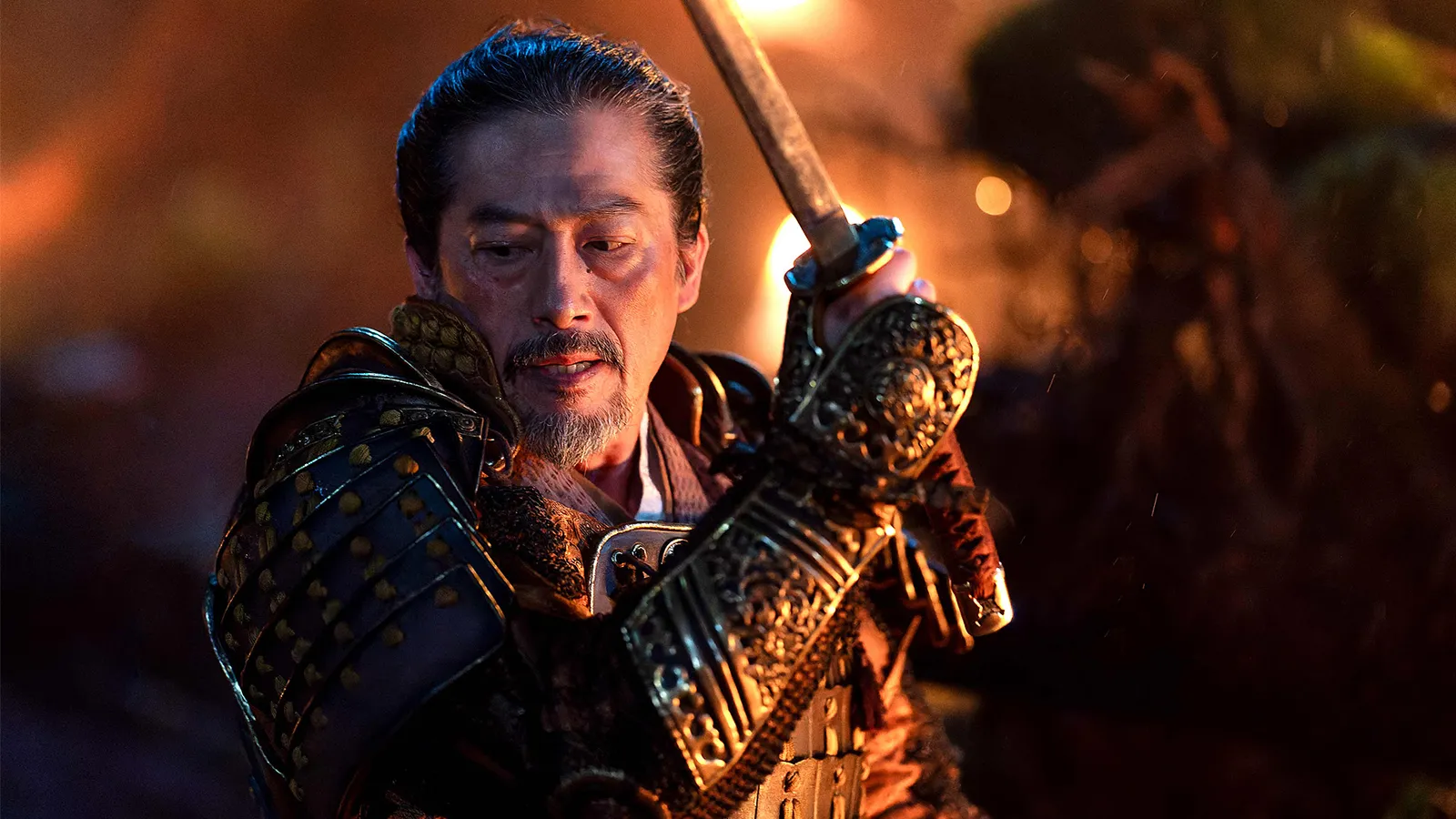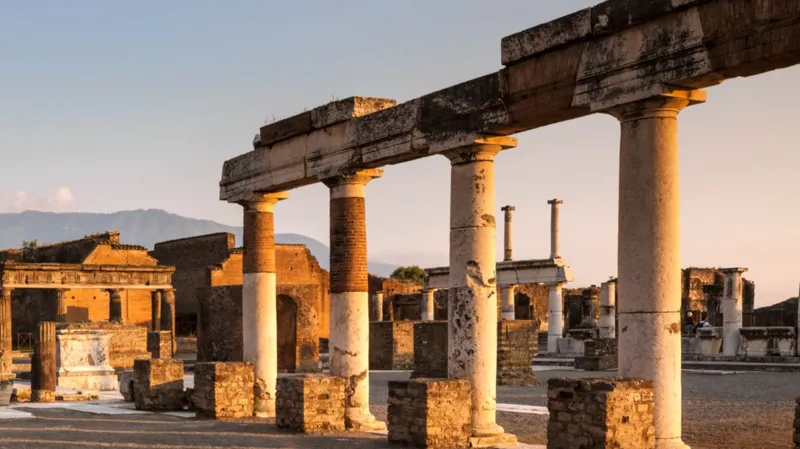Shōgun: The brutal Japanese history that inspired 2024's latest TV hit
Cosmo Jarvis and Hiroyuki Sanada star in the new hit Hulu/FX/Disney+ series Shōgun, which brings to life Japan's violent feudal past in all its terrifying glory.

There's a stomach-churning moment in the debut episode of FX/Disney+'s Shōgun that sets the standard for the kind of brutality surely to follow. Having endured starvation, scurvy, and a captain's suicide aboard a ravaged Dutch trade ship, pilot major John Blackthorne (Cosmo Jarvis) and his surviving crew are shipwrecked off the coast of Anjiro, only to be thrown into a pit by sword-wielding captors to await their fate. Though Blackthorne avoids execution himself, a member of his entourage is less fortunate – he's bound and placed into a cauldron, where he is slowly boiled to death.
No, this is not Westeros, despite what the rave reviews for the show comparing it to Game of Thrones may suggest. This is Japan in the year 1600 – a time of great unrest after two centuries of civil wars. Here, Blackthorne – based on the real-life navigator William Adams, the first Englishman to reach Japan – must assimilate to a brutal, foreign reality as a tenuous five-regent government threatens to rupture into warring factions after the passing of the Taikō (retired Imperial regent). With Catholic missionaries providing a further antagonistic presence to the Protestant Blackthorne, his survival may depend on an alliance with Lord Yoshii Toranaga (Hiroyuki Sanada) – who has seemingly himself been marked for termination by political rivals.
Originally a world-famous bestseller (James Clavell's 1975 historical fiction had shifted 15 million copies by the year 1990), Shōgun has demonstrated its small-screen potential before. In 1980, the original nine-hour NBC miniseries - starring Richard Chamberlain, John Rhys-Davies, Japanese icon Toshirô Mifune, and Orson Welles as narrator - won three Primetime Emmys and three Golden Globes after achieving the second-highest viewership ratings in US TV history; its popularity contributed to the rise of sushi restaurants in the US that decade. In 2024, Rachel Kondo and Justin Marks' new series largely eschews big names, but instead brings even more vivid historical context to the forefront - ultimately delivering a rich depiction of feudal Japan in all its terrifying glory.
In 1600, the world's power dynamics were very different from today: Protestant England had been forced to defend Elizabeth I's throne from invasion in 1588, with the Spanish Armada intent on reinstating Catholicism and ending English support for Dutch independence from Spain. The latter country would, by this time, be in a dynastic union with Portugal; the two powerful Iberian states had previously divided the oceanic domains beyond Europe between their vast empires with the 1494 Treaty of Tordesillas. A vanguard of global exploration, Portugal discovered Japan in 1543 – and began to trade Western goods such as matchlock firearms with them while also spreading the Catholic faith via the introduction of Jesuit missionaries. This context serves as the backdrop to Blackthorne's treacherous voyage in the opening of Shōgun.
The Portuguese and Spanish had two goals: the first was to convert Japan to Christianity… the second was to ultimately conquer Japan – Thomas D Conlan
"The Portuguese (and Spanish) had two goals," explains Thomas D Conlan, professor of East Asian studies and history at Princeton University and author of Samurai and the Warrior Culture of Japan, 471–1877: A Sourcebook. "The first was to convert Japan to Christianity. The second was to ultimately conquer Japan [through] converting high-ranking lords to Christianity. But they had to tread carefully… militarily the Portuguese simply could not compete with Japanese power." Indeed, such wariness was recorded as early as 1552 by one of the first Western visitors to Japan. "They are very polite to each other, but not to foreigners, whom they utterly despise," said Catholic missionary Francis Xavier of the local populace in a letter to the Society of Jesus in Europe. "They are, in short, a very warlike people, and engaged in continual wars among themselves."
'Brutal times'
Japan at this time was in the midst of a long and chaotic upheaval – hence the tensions seemingly ready to erupt in Shōgun. Known as the Sengoku Jidai or "Warring States period" (roughly 1467-1615), this was an era defined by near-constant civil wars, as feudal lords engaged in a struggle for total control of the country. The goals of three successive warlords – including Toyotomi Hideyoshi, the recently-deceased Taikō of Shōgun's narrative, and Tokugawa Ieyasu, his eventual successor - would be achieved with the unification of the country in the early 1600s, but not without considerable violence and force at the hands of the bushi (samurai warrior) class.
The sword-carrying samurai did conform to a strict moral code pertaining to the ideals of the cultivated warrior. As Danny Chaplin, author of Sengoku Jidai. Nobunaga, Hideyoshi, and Ieyasu: Three Unifiers of Japan, explains, their beliefs came from several religious traditions: "From Buddhism, the samurai learned not to fear death since the self was an illusion anyway. From Shinto, the samurai learned to revere his ancestors, imparting to him a profound sense of loyalty and continuity. From Confucianism, he learned the rudiments of behaviour towards others within a strictly hierarchical society." But despite these virtues, they were also ruthless in keeping order. For example, to maintain honour, an immediate reaction was permitted by samurai as a response to a perceived sleight from a member of the lower classes; kiri-sute gomen or "authorisation to cut and leave" is demonstrated early on in the brutal new series when a peasant loses his head (both literally and figuratively) in the street.
Loyalty to one's lordship, moreover, was paramount in samurai values – and dying in that service was considered an honour. Falling into the hands of the enemy – or succumbing to an unmanly fate – was erstwhile considered a disgrace. These ideals (prevalent right up into the modern age, with the kamikaze pilots of World War Two) would be embodied best with the act of seppuku, or suicide by self-disembowelment – a ritual suggested by Shōgun's Kashigi Yabushige (Tadanobu Asano) when he draws his sword after falling into the ocean, facing a shameful death by drowning.
Violence as a punishment was meant to be spectacular, and terrifying so as to ensure compliance to the laws – Danny Chaplin
These were brutal times," Chaplin says; katana swords were frequently "tested" on condemned prisoners, and the taking of up to thousands of heads as trophies during battle "was widely practised by the samurai". In another famous incident from 1597 – which echoes the arrival of Blackthorne's crew in Japan in Shōgun – the Taikō made an example after the pilot of a shipwrecked galleon suggested that the Spanish were intending to conquer Japan via infiltrating it with missionaries. Hideyoshi had 26 Christians crucified and impaled with lances in response. And just as the Tudors in England beheaded wives and burned Catholics at the stake, the Japanese utilised cruel methods such as those exacted upon Blackthorne's unlucky crewmate: legendary bandit Ishikawa Goemon – a kind of Japanese Robin Hood – was boiled alive on the banks of the Kamo River in Kyoto in 1594.
"Violence as a punishment was meant to be spectacular, and terrifying so as to ensure compliance to the laws," says Conlan. Perhaps seppuku itself, then – often offered as a "privilege" to samurai defeated in battle, but also favoured as a method of capital punishment since a victim's family was less likely to seek revenge for a self-inflicted death – typified this spectacle more than anything. In one famous incident, the Taikō even ordered his already-exiled nephew to die by suicide in 1595 to avoid a potential challenge to his heir's succession. Such cruelty (Hideyoshi also executed his entire family, totalling 39 men, women and children) contributed to Western perceptions of the Japanese: "Europeans were shocked that Hideyoshi would do this to a close relative," says Conlan.
The Sengoku period would reach its climax with the Battle of Sekigahara in 1600 – the largest and arguably most important in Japanese feudal history, which left up to 36,000 dead or seriously injured in a single day. It's an event that seems to loom on the horizon in Shōgun. In its wake, Japan would enter a new age, Edo – defined by more than 250 years of relative peace, an isolationist foreign policy (intending to remove the colonial and religious influences of Spain and Portugal), and the prohibition and persecution of Christians. With a bit of luck, Blackthorne might make it to this period – what's more certain, though, is that there will be grave horrors to face first.
-bbc






